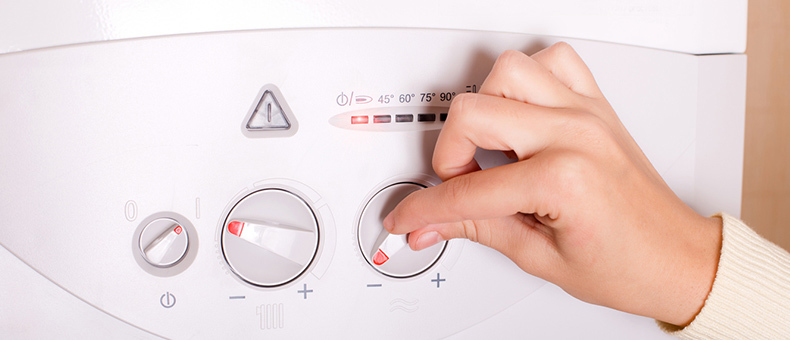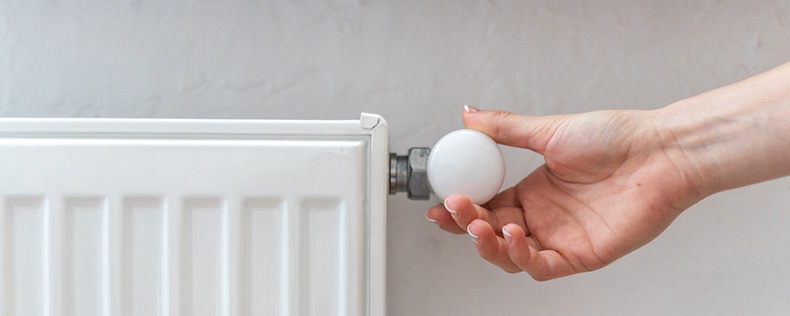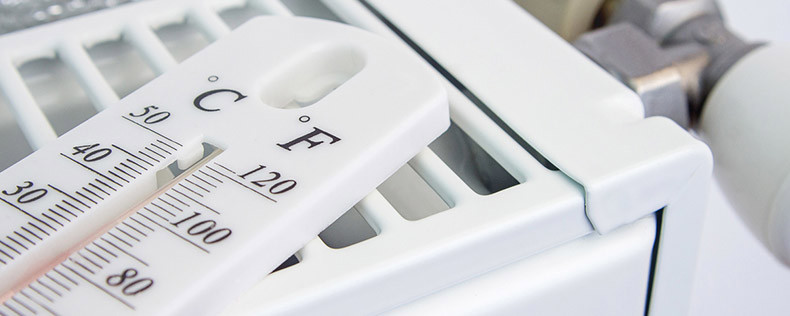If you haven't balanced the radiators in your home, some will heat up faster than others which will lead to cold spots.
Radiator balancing is the process of adjusting your radiators so they all heat up at the same speed. This will keep all your radiators operating as they should and prevent some rooms being much colder than others.
If you find you have one radiator that's much colder than the rest, there could be air trapped in the system and you'll need to bleed your radiators.
You Will Need:
- Radiator bleed key
- Lockshield valve key
- Screwdriver
- Digital thermometer or multimeter with thermometer
- Adjustable spanner
How To Balance Radiators:
- Turn off your heating
- Open all radiator valves
- Record the speed each radiator heats up
- Let your radiators cool down
- Adjust the quickest radiator
- Adjust all other radiators
1. Turn Off Your Heating
To begin balancing your radiators, you must first turn off your home heating system so every radiator is ice cold.
It's not essential but can be useful if you have recently bled your radiators. This will allow you to take more accurate temperature readings from each radiator.

2. Open All Radiator Valves
Once you've allowed your radiators to cool down you'll need to open up all the radiator valves in your home.
Your valves can be opened by turning them anti clockwise. If you have a thermostatic or wheelhead valve the process is easy, simply turn them by hand.
If your radiators have lockshield valves, you'll need to remove their plastic cover first. You can then turn them anti clockwise using either a lockshield valve key or adjustable spanner.

3. Record The Speed Each Radiator Heats Up
Once you've opened up all the valves, you'll need to turn on your heating system. At this point, enlist some family or friends to help.
With your helpers ready and spread out around your home, you'll need to make a note of how long the radiators take to heat up. The radiators nearest to the boiler will usually be the quickest to heat up.
Once you've finished, you should have a rough order of which radiators heat up the fastest and the slowest.
4. Let Your Radiators Cool Down
Next up, turn off your heating system and allow all your radiators to cool down completely. This will take a while and some people even prefer to leave their radiators to cool overnight.
5. Adjust The Quickest Radiator
Once your heating system has cooled down completely, you can turn everything back on and go to the fastest radiator. Completely close the lockshield on this radiator, then open it by one quarter turn.
Once this radiator has started to heat up, take your thermometer and measure the temperature of the pipework next to the valve. Note down this temperature and move across to the pipework on the opposite side of the radiator where the TRV is. Take a temperature reading of the pipework this side and note it down.
The difference in temperature between these two pipes should be exactly 12°c. To adjust the temperature to match this. you'll need to open the lockshield valve very slowly, then measure again.
This is a process which will take a lot of time and patience. Each time you turn the lockshield, it's important to give the radiators time to heat up or down before taking another temperature reading.

6. Adjust All Other Radiators
Once you've finished adjusting your fastest radiator, you can then move onto the slower radiators. Using the method described above, adjust them all in the order they took to heat up.
When adjusting your radiators, the amount you'll need to turn the lockshield will vary depending on the distance to your boiler. The further away from the boiler, the more you'll need to open the lockshield. As you get to the slowest radiator, you may even need to open it completely.
That’s all for our radiator balancing guide. If you've followed all the steps correctly, the radiators furthest away from your boiler should now be heating up at the same speed as those closest.
If you think it's time to upgrade your radiators, take a look at our extensive heating collection.







